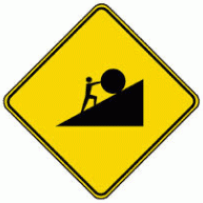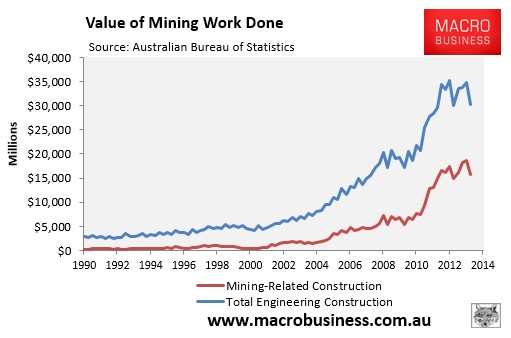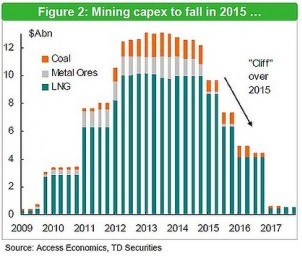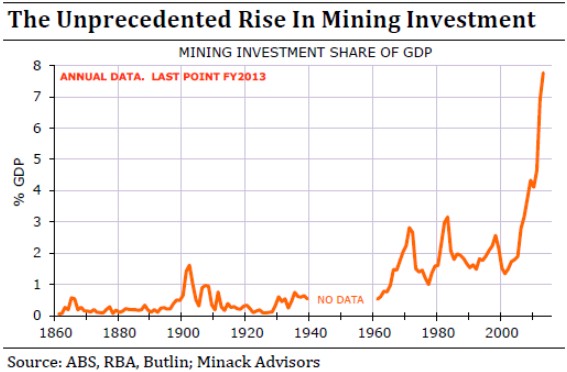
If I was to pick a skilled occupation to avoid right now, it would be engineering.
My Father and brother-in laws are both engineers working in mining-related areas. And through them, I also know a bunch of other engineers. For the past decade I have watched with amazement as their work boomed and huge pay rises flowed as the biggest commodity price and mining investment boom since Federation arrived on our shores.
The story today has changed immensely. Engineering design work has all but dried-up. There’s still construction and maintenance work, but these too are declining, and the overall outlook for engineering is looking increasingly downbeat. At my father-in-laws’ business, some staff have already been let go and they are battling to share the work around.
The problem for the engineering sector is that the lean times have only just begun. They all know that the great mining investment boom has only started to unwind and has much further to run, as illustrated beautifully by the below charts:


Incidentally, I also have a friend that worked at Holden’s Port Melbourne office as a design engineer. For years I watched on as his mood became gradually more sober as he watched the industry that he had worked in his entire working life slide into terminal decline. Thankfully for him, he managed to leave two months age for a position at a food manufacturer. He knew that if he stayed at Holden, he would receive a large redundancy; but the thought of competing with hundreds of other engineers – all of whom have been made redundant at the same time – was too depressing.
Thankfully for him, he seems to have made a wise move, with Holden last night announcing that it would cut 400 product engineering staff from its Port Melbourne office by Christmas, with another 200 to go by the same time next year, as the company phases-out production by 2017:
“Unfortunately this is not news to the engineers themselves,” said Sharelle Herrington, the Victorian branch director of Professionals Australia, adding that the final 2014 figure will likely be between 200 and 400 staff.
“These job cuts will happen by the end of the year, but that was always the plan.
“These staff are all product development engineers, these are the people who design the car, who make it work, do all of the engines and chassis and everything else.
“With Holden not producing vehicles in Australia moving forward, the work for these engineers will eventually cease to exist.”
In many ways, these design engineers are the bellwether for both the mining and car industries – and are a harbinger of things to come for the broader economy. They are at the front-end of the production chain and are usually the first to lose their jobs as production ceases.
Earlier this year, NAB estimated that 100,000 jobs could be lost as mining investment contracts from 8% of GDP currently to around 4%. However, if history is any guide (see next chart), mining investment will likely fall much further over subsequent years – possibly to around 2% of GDP (if not lower) – which could bring with it even bigger job losses.

What is most worrying is that these mining-related job losses will more or less coincide with the shuttering of the local car industry by 2017.
Modelling by the Productivity Commission (PC) estimated that the closure of the car industry would cost up to 40,000 jobs, mostly in Victoria and South Australia. The PC’s findings are broadly similar to modelling undertaken late last year by the Allen Consulting Group, using economic analysis from Monash University, which estimated that the closure of the local car industry would cost around 33,000 jobs in Melbourne and around 6,600 jobs in Adelaide by 2018. For its part, the Australian Industry Group contested both of these estimates and believes that total job losses could actually be much higher.
Whether these estimates of job losses come to fruition is a moot point. The fact is, job losses will likely number tens-of-thousands and present a stiff headwind for the economy and labour market over a protracted period.
And it is the engineers – who were key beneficiaries as the mining boom’s riches first blessed our shores 11 years ago – who will be the first to feel the pinch.

